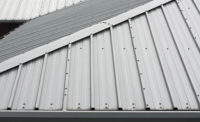Sustainable Roofing? There's an App for That!






Throughout the past 10 years, I’ve written a lot about the many free calculator apps available to help roofing contractors sell the benefits of energy-efficient, long-lasting roofs. As a result, more than half the reader inquiries I receive involve requests for information to obtain and use these free apps. Well, the good news is that all the calculator apps I’ve talked about continue to be free and easily available via the Internet. So, if you’d like to learn more about these free roofing apps, I’m using this month’s column to provide a brief description and Web link for each app.
EnergyWise Calculator. EnergyWise combines several important roof design features in one calculator. First, you can compare the annual heating and cooling costs of different types of roofing systems with different insulation levels. In addition, you can use the calculator to verify the requirements for recent versions of the leading model energy codes. Finally, you can check to see if your roofing system needs a vapor retarder and where it should be placed within the roofing system. As an extra benefit, you can print out an energy evaluation ready for insertion into your roofing proposal. EnergyWise is a free online calculator (registration required) sponsored by NRCA. For more information, visit http://energywise.nrca.net.
Cool Roof and Cool Peak Calculators. Oak Ridge National Laboratories (ORNL) maintains a free online calculator that compares the energy savings of different roofing systems based on the reflectivity of the roof surface. For customers who pay a flat rate for electricity used for air conditioning, you can use the Cool Roof Calculator; and for customers who pay additional demand charges for peak electricity usage, you can use the Cool Peak Calculator. For more information, visit http://web.ornl.gov/sci/roofs+walls/facts/CoolCalcEnergy.htm.
Green Roof Energy Calculator. This free online calculator was developed through a collaboration of Portland State University, University of Toronto and Green Roofs for Healthy Cities. The Green Roof Energy Calculator allows you to compare the annual energy performance of a building with a vegetative green roof to the same building with either a dark roof or a white roof. In addition, the calculator will provide an estimate of annual rainwater runoff that can be eliminated by using a vegetative roof. For more information, visit http://greenbuilding.pdx.edu/GR_CALC_v2/grcalc_v2.php#retain.
SkyCalc™. SkyCalc is a free, downloadable Excel spreadsheet that can help you determine the optimum skylighting strategy to achieve maximum lighting and HVAC energy savings for a building. SkyCalc combines information about skylight design and placement with real-world climate data to allow you to select the optimal skylight system for any building. SkyCalc is maintained by Energy Design Resources, which is funded by the California Public Utilities Commission. For more information, visit http://energydesignresources.com/resources/software-tools/skycalc.aspx.
PVWatts®. PVWatts is a free online calculator developed by the National Renewable Energy Laboratory (NREL) to estimate the electricity production of a grid-connected roof- or ground-mounted photovoltaic (PV) system based on a few simple inputs that allow homeowners, installers, manufacturers and researchers to easily gauge the performance of hypothetical PV systems that use crystalline modules. Evaluate the energy production potential for a commercial rooftop PV system installed on your model roofing project. For more information, visit http://www.nrel.gov/rredc/pvwatts/.
RoofPoint™ Energy and Carbon Calculator. Developed by the Center for Environmental Innovation in Roofing, the RoofPoint Energy and Carbon Calculator combines the inputs of all the calculators listed previously plus a few more to allow you to compare the total energy profile of roofing systems. And after you have calculated the total energy profile, you can also compute the carbon footprint of the roof. For more information, visit http://www.roofpoint.org/center-releases-roofpoint-energy-and-carbon-calculator.
EUAC Calculator. EUAC stands for Equivalent Annual Uniform Cost, which describes how you can compare the life-cycle cost of roofing systems that have different service lives. Using the EUAC calculator, you can arrive at an apples-to-apples comparison of common 10-, 15-, 20- and 30-year low-slope roofing systems to help your customers make the best long-term investment decision. The EUAC Calculator was introduced in 2006 and continues to be available as a free download from TEGNOS Research. For more information, visit http://tegnos.org/Greenresearch.html.
Athena Impact Estimator. Architects and building designers across North America are using the Impact Estimator to evaluate the environmental impacts of whole buildings and key building components. As a roofing contractor, you can use the Athena Impact Estimator to compare the environmental footprint of different roofing systems, including key environmental factors like global warming potential, ozone depletion potential and many more. The Impact Estimator was developed by the Athena Sustainable Materials Institute, and you can obtain a free download of the tool (registration required). For more information, visit http://www.athenasmi.org/our-software-data/impact-estimator/.
If you’re interested in learning more about how to use these tools, please consider signing up for this spring’s Commercial Roofing Boot Camp, which begins on March 9. Commercial Roofing Boot Camp is a 10-week online roofing design course that combines video lessons, reading assignments and hands-on calculations using all of the apps listed in this column. For more information and to register, click here.
Looking for a reprint of this article?
From high-res PDFs to custom plaques, order your copy today!









